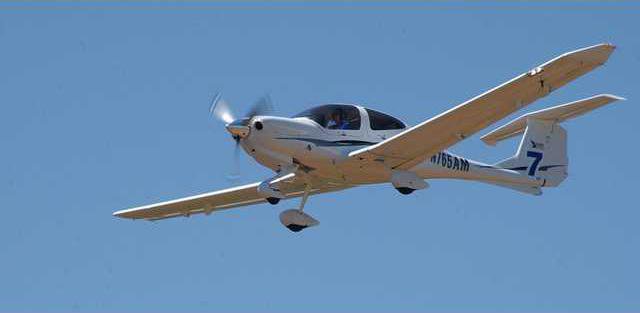In the span of one hour Wednesday afternoon, many of the 50 two-member teams participating in the truncated 2011 Air Race Classic stopped and refueled at the Great Bend Municipal Airport.
“The sky was filling up pretty good,” airport Manager Martin Miller said. With 50 planes coming in between 3-4 p.m., “the arrivals were right on top of each other.”
Originally, the annual all-women race was set to begin in Iowa City, Iowa, Tuesday morning. This would have allowed the pilots to stagger their stops at Great Bend after completing the first legs of the race.
However, “there were weather considerations,” said race President Marolyn Wilson said. The bad weather forced organizers to eliminate the first four stops, and cut the race from 2,300 nautical miles to a little over 1,200.
“The whole scope of what they were going to do changed,” Miller said. The colorful craft started to get backed up as they waited their turn at the pump.
Some of the racers flew on to the next stop, Borger, Texas. The pilots who opted to land got out and take a short snack or restroom break while their planes were fueled, and took off for the next stop. Some were on the ground for as little as 15 minutes.
All the pilots, whether they touched down or not, made a pass at 300 feet. Timers under a canopy clocked each plane down to fractions of a second. This can mean the difference between winning and losing.
“The pilots weren’t upset,” Wilson said of the change. “They were just happy we were thinking safety first.”
The race was scheduled to begin 8 a.m. Tuesday in Iowa City. Racers had through Friday to finish the race in Mobile, Ala., after having to stop at checkpoints in Brookings, S.D.; Jamestown, N.D.; Spearfish, S.D.; Rawlins, Wyo.; Alliance, Neb.; Great Bend; Borger; Norman, Okla.; and El Dorado, Ark.
However, the pared-down race took off at 1 p.m. Central Standard Time Wednesday from Alliance. The remainder of the event should remain the same, ending by sundown in Mobile.
“We had five legs instead of 10,” Wilson said.
Under the Air Race Classic banner, the race has taken place each year for 35 years. But, “this was the first time we’ve ever had to do this,” Wilson said of shorting the contest.
The Air Race Classic honors a tradition that began with the first Women’s Air Derby in 1929. Over the years the race has changed names and scoring methods, and the contestants follow a different route each year.
In the current format and under good conditions, racers are given four days to complete all 10 legs of the race following visual flight rules. That means that they can fly only when the conditions are clear enough for the pilots to see where the aircraft is going. The pilots try to play the elements by waiting for better weather or winds.
Planes are assigned a handicap speed, and the pilots’ goal is to have their actual ground speed be as far over the handicap speed as possible. Women can compete with airplanes ranging from 145 to 570 horsepower, so the handicapping system lets each team race within the capabilities of their plane. It’s possible that the last plane to cross the finish line will win the race.
Why do these women compete? “For the adrenaline rush,” said 15-race veteran Bonnie Johnson from Valley Center. Although not flying this year, she was helping with the Great Bend stop.
“It also makes you a better pilot,” she said. It forces flyers to hug as direct of a line between stops as they can. Global Positioning Satellite equipment helps with this.
There is also a $5,000 prize for the winner.
As for the fast fueling operation at Great Bend, Miller said this was the first time they’ve had this many craft come in this fast. “We had an air show last year, but it was nothing like this.”
A line at the pump
Air racers refuel at GB Airport





